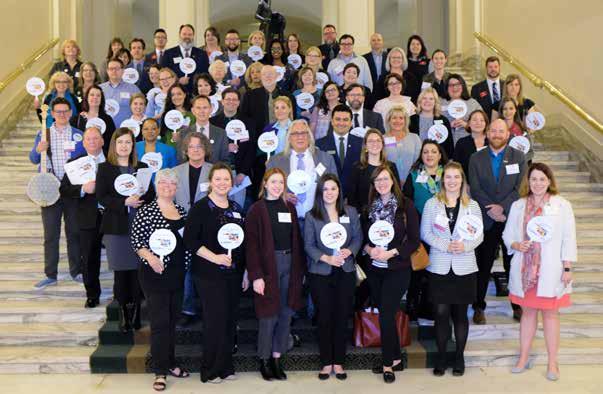MARILYN ARTUS: Celebrating Women’s Rights by Following the Path of the 19th Amendment By Emily L. Newman
The 36 collaborating artists that made a stripe for Her Flag
The battle for women’s right to vote in the United States was long and hard-fought, but in 1920 Tennessee finally became the 36th state to ratify the 19th Amendment. Alice Paul, one of the staunches suffragists and leader of the National Women’s Party, helped visualize the ratification process by contributing a star to a banner, horizontally striped in gold, white, and purple, symbolic of the party. Each time a state approved the amendment, another star was added. Unfortunately, the flag is now lost, but it exists in pictures and suffragist narratives. This flag was just one of many different elements that inspired Marilyn Artus to create Her Flag. Her Flag is a bold ongoing endeavor, with many different parts and performances. Its complications only enhance the project, mirroring the long and frustrating years that many suffragists had worked so diligently. Artus’ ambitious project begins with the physicality
22 f e a t u re
of the flag itself; with the collaboration of 36 artists (one from each state that ratified the 19th Amendment), Artus is making a large flag (intended to be 18’x26’). Each artist contributes a stripe to the flag, that is then attached to the flag by Artus. Significantly, she travels to each state to meet with the artist and stage a performance. As the gathering is held, Artus attaches the newly created strip to the flag. These performances are celebrations, stories are shared, and the spirited atmosphere allows everyone to remember the importance of women’s right to vote. For Artus, diversity is key. However, and like many others, she acknowledges the that the amendment only guaranteed the right to vote for white women. At these events, Artus makes sure to tell stories of people of color and their important contributions. By incorporating these stories, she is working to change the narrative that has
for so long deemphasized the role that women of color played. To further encourage conversations of inclusion, Artus made sure that the performances and contributing artists reflected the current population of the United States. Interested artists submitted an application to be involved in the project. Over 240 people applied. In searching for people to contribute, Artus accepted resumes, artist statements, and artwork samples. Looking for diversity in age groups, race, and art styles, she wanted to make sure to find artists whose work naturally complemented the project. Importantly, and perhaps unusually, Artus has paid each artist involved in the project: every contributor who makes a stripe for the flag, the performance artists, and her assistants. By raising funds to pay everyone involved in the










